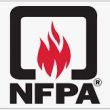L3Harris to unveil device to meet new NFPA code in mid-May, source says
L3Harris next month will announce a new radio that is designed to meet the new National Fire Protection Association (NPFA) 1802 standard for communications devices that requires handsets to be able to withstand extreme conditions and provide “black box” recording, according to a source familiar with the matter.
L3Harris is expected to unveil the new radio in mid-May, according to the source, who spoke with IWCE’s Urgent Communications on the condition of anonymity. The new communications device is designed to meet all of stringent NFPA 1802 specifications, but the handset will not be able to be considered to be NFPA 1802-compliant until it successfully completes all of the extensive testing outlined in the standard, according to the source.
No other characteristics of the new L3Harris fire-communications device were revealed by the source, who noted that detailed information about the fireground radio will be available at the time of the official announcement.
To meet the NFPA 1802 standard published in January—the NFPA’s first communications-device standard—a device must be able to continue functioning in extreme environments, according to Don Griffis, one of the L3Harris representatives who served on the technical committee that developed the standard.
These tests includes a 10-second, 1,700-degree impingement, putting the device in a 500-degree oven for five minutes, and 12-stage test in which the device alternatively is exposed to 350-degree heat for 15 minutes and then is submerged into 2 meters of water for two hours, Griffis told IWCE’s Urgent Communications last month.
At that time, Griffis said that the L3Harris public-safety and professional-communications (PSPC) division had turned to the giant company’s Space & Airborne Systems division to get advice about the best materials and designs to use to meet the NFPA 1802 tests.
In addition to its durability requirements, NFPA 1802 requires certified devices to including data-logging functionality, which can be used for forensic assessments of incidents—much like the way “black box” voice logs are used to determine what happened during the moments prior to an airplane crash. Being able to retrieve this information could bolster forensic reviews, response planning and training, according to fire-agency sources.
Most public-safety officials conceptually have expressed support for the NFPA 1802 durability and functionality requirements, but many also have expressed concerns about the practical realities surrounding use of a device that meets the standard.
Whether a vendor can build a handset that meets the NFPA 1802 standard could be answered in a few weeks, when L3Harris is expected to make its device announcement. While this is the first question asked by public-safety officials after the NFPA 1802 standard was published, it was not the only concern raised. Some of these may be addressed by L3Harris when it unveils its new fireground device, but others may not be answered for some time.
From a technical standpoint, many public-safety representatives have questioned how a device that is sealed in a manner to meet the NFPA 1802 standard will be able to let its internal component dissipate heat. Other want to know whether such a device can support both LMR and broadband—for instance, LTE and/or Wi-Fi—communications—notably, the Z-axis-location application introduced by FirstNet earlier this year.
But perhaps the most-asked question surrounds the pricing of NFPA 1802-compliant devices. Given the stringent requirements and tough testing associated with the standard, many public-safety representatives have expressed concern that the devices will be so expensive that many fire agencies will not be able to afford them, particularly rural and volunteer departments.
Related questions to this revolve around whether multiple vendors will be able to build devices that meet the NFPA 1802—creating competition in the market—and whether such devices would be attractive to sectors other than fire agencies, so there would be greater economies of scale for vendors.
In particular, several industry experts have wondered whether the “black box” component would be something valued in other devices—not just something as rugged at an NFPA 1802-compliant device—and whether it could incorporated in SCBA masks or other accessories. Beyond public safety, users in the utility, construction, healthcare and oil-and-gas sectors have been mentioned as possible candidates that might be interested in leveraging at least some—if not all—of the requirements in the NFPA 1802 standard.
In addition, some have noted that the NFPA 1802 durability and functional capabilities could be extremely valuable in high-end Internet of Things sensors and communications nodes that promise to be critical in the smart-grid, smart-cities and smart-building arenas. The ability of such IoT systems to continue functioning in even the harshest environments could help give all sorts of responders—from public safety to utilities to IT/maintenance departments—much great situational awareness when significant incidents arise, according to industry sources.















